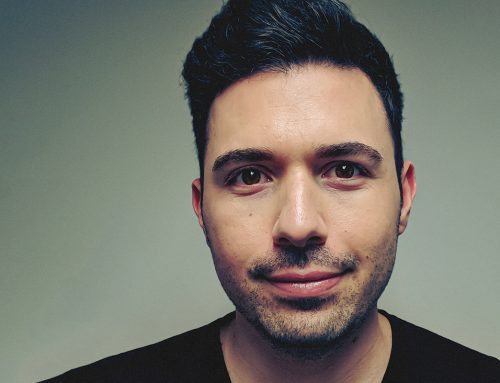
Long before the first signs of COVID-19 upended traditional modes of education and turned kitchen tables into classrooms, CUNY SPH invested in the people and infrastructure that would support ongoing online learning.
In 2015, faculty attended a four-week training program in anticipation of CUNY SPH’s consolidation into an independent graduate school the following year. They developed online courses meant to be taught outside of the comfort zone of lecture halls and labs. They learned best practices to keep students engaged and experimented with various media and techniques based on the most current research.
“We weren’t planning on a pandemic,” says Sergio A. Costa, Interim Assistant Dean for Digital Learning, Marketing, and Communications and lecturer in the Department of Community Health and Social Sciences. “We were being well prepared to address changing trends.”
Today, CUNY SPH offers all five of its traditional MPH degrees in fully online, hybrid, and in-person formats. An additional four MS degree programs and two advanced certificates are also available fully online, and PhD students can choose from a mix of online and in-person formats.
Enrollment in online sections for the spring 2022 semester that just ended were filled within days of opening. The appetite is clear, Costa says.
The groundwork in pedagogical training and online class development has proven to be an important innovation for a school whose students may still be apprehensive about in-person gatherings or prefer to learn remotely. The prep work readied faculty and staff to handle future disruptions and has helped extend the school’s reach beyond New York City. Perhaps most importantly, CUNY SPH is equipped to meet the needs of students who want or need to work and require flexibility to manage childcare and other critical family demands.
“This is a big step toward equity and an opportunity for people to take a degree program when they don’t think they have time to do it,” says Laura Meoli-Ferrigon, the academic technology specialist in CUNY SPH’s Office of Online Learning.
Hannah Stuart Lathan, the 2021 valedictorian and program manager of CUNY SPH’s CONVINCE USA and the New York Vaccine Literacy Campaign, earned her MPH in two years despite working full-time. On a recent “Making Public Health Personal” podcast, she told Meoli-Ferrigon that online learning allowed her to engage more fully with the school and pursue opportunities for which she otherwise would not have had time.
Ivonne Quiroz, a doctoral student focusing on community health and health policy, says asynchronous courses provide the flexibility to work at her own pace and manage her ADHD. “Sometimes my brain is just, ‘No, we don’t want to do that today,’ ” Quiroz says. “For someone who’s neurodivergent and who doesn’t really have stable energy every single day, it helps with being able to still be successful at my work and contribute in the way that I want to.”

Laura Meoli-Ferrigon

Sergio Costa
A new approach
Meoli-Ferrigon arrived at CUNY SPH last year during the pandemic. With a background in instructional design and media production, she helps faculty produce courses that blend videos, images, infographics, and other media with interactive learning modules. “There’s a new generation of students who learn differently, whose attention spans are shorter,” she says. “They don’t want to just stare at a professor on screen talking for an hour.”
At the beginning of the pandemic, naturally some instructors might have thought they would teach courses on Zoom the same way they had taught in person for the last 20 years. “Those are the classes where they’re trying to imitate what’s better done in person,” she says. “You have to change the way you teach the course to deliver it online. You have to integrate technology, polls, and groupwork. You can’t expect it will be the same. That adaptability on the part of professors is what makes a successful online learning experience.”
Costa reports that upwards of 70 percent of CUNY SPH faculty are trained and proficient in online teaching. “The faculty who approached us with trepidation are now much more comfortable,” he says. “They all upskilled in a way I couldn’t have anticipated.”
Successful online courses are taught by instructors who have their finger on the pulse of their class, Costa says. They establish a consistent presence and responsiveness that is just as powerful as in-person exchanges. They provide reflection time and curate discussion boards to promote give-and take. They integrate techniques that are increasingly important in the workplace, including time management, negotiation, conflict resolution, organizational, and accountability skills.
“Busy people don’t need busy work,” Costa says, meaning that coursework should help students achieve their professional goals. In addition to papers and exams, outcomes should include a portfolio that demonstrates a range of deliverables typically encountered in the workplace.
New CUNY initiative
SPH was one of the first CUNY schools to identify the tools and training it needed to build and maintain an optimal online learning environment. But this March, university administrators announced the launch of CUNY Online and the development of up to 10 new online associate, bachelor’s, and master’s degree programs to begin by spring 2023. The initiative, fueled by $8 million in federal stimulus funds and directed by the School of Professional Studies, is expected to have 13 to 20 new programs ready by fall 2023.
CUNY Online would represent a hub where prospective and current students can learn about programs offered online, Costa says. It would also provide CUNY administrators and instructors with access to videographers, instructional design experts, designers, animators, and studio recording engineers to help produce the highest quality online courses.
“We’ve been doing that and following rubrics to ensure quality online courses,” he says. “But CUNY Online would provide opportunities to enhance the production of what we’ve developed for a richer learning experience.”
What’s next?
With public health top of mind during the pandemic and its long-term implications still unknown, CUNY SPH will take full advantage of the marketing power behind CUNY Online to demonstrate its rigorous approach to online learning. “We have the ability to take the best of CUNY to urban areas outside of New York and around the globe,” Costa says. “Our quality programs will no longer be a secret.”
Meanwhile, the school is considering the addition of so-called micro-credentialling, or shorter courses, to whet the appetite of potential longer-term students. The courses could teach discrete skills including data analysis, change management, and offer topics such as epidemics and vaccines. The courses could be stackable and lead to a certificate, Costa says.

CUNY SPH is also making efforts to utilize more interactive technology so faculty can create interactive learning experiences that would be adaptable to both synchronous and asynchronous learning.
Last October, Costa and three CUNY SPH faculty colleagues published a commentary in Frontiers in Public Health titled “Moving Education Online During the COVID-19 Pandemic: Thinking Back and Looking Ahead.” They argued that public health must meet upcoming challenges “by supporting and training instructors to perform well with new and mixed modalities, by supporting students with new skills and competencies, and by positioning its schools and programs to become more adaptive in the face of emergencies.”
“Online learning won’t take the place of in-person, nor should it,” he says. “But it’s incumbent upon schools to offer a range of learning opportunities to accommodate students where they are, and that includes their work, professional, and personal lives.” According to the 2021 CUNY SPH annual report, 69 percent of students attend school part-time. Of the 922 students enrolled, 62 percent are employed full-time and 21 percent part-time.
Online learning still requires some myth busting around socialization, isolation, participation, and the inability to read body language. But one of the biggest benefits is a more democratic way of teaching. “It’s hard to hide that you’re falling asleep in the back row of a classroom when you’re on a screen right in front of the instructor or asked to participate online using a variety of tools and assessments,” Costa says. “This way, you remove the wallflower effect. Everyone has a chance to interact. And professors have a chance to motivate students so they can achieve their best work.”







